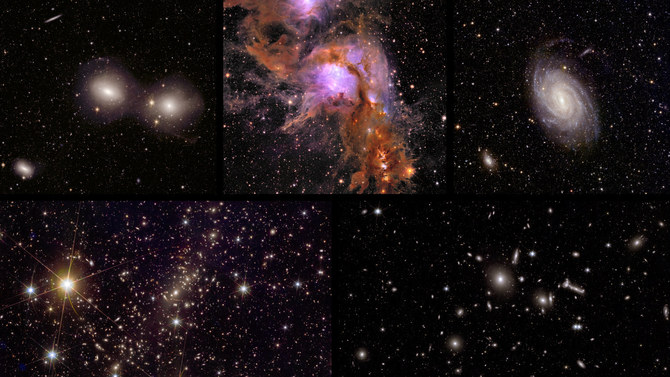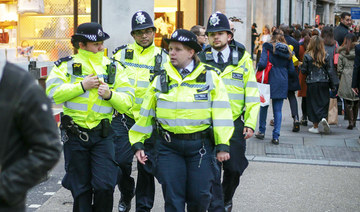WELLINGTON, New Zealand: A pregnant New Zealand journalist says she turned to the Taliban for help and is now stranded in Afghanistan after her home country has prevented her from returning due to a bottleneck of people in its coronavirus quarantine system.
In a column published in The New Zealand Herald on Saturday, Charlotte Bellis said it was “brutally ironic” that she’d once questioned the Taliban about their treatment of women and she was now asking the same questions of her own government.
“When the Taliban offers you — a pregnant, unmarried woman — safe haven, you know your situation is messed up,” Bellis wrote in her column.
New Zealand’s COVID-19 Response Minister Chris Hipkins told the Herald his office had asked officials to check whether they followed the proper procedures in Bellis’s case, “which appeared at first sight to warrant further explanation.”
New Zealand has managed to keep the spread of the virus to a minimum during the pandemic and has reported just 52 virus deaths among its population of 5 million.
But the nation’s requirement that even returning citizens spend 10 days isolating in quarantine hotels run by the military has led to a backlog of thousands of people wanting to return home vying for spots.
Stories of citizens stranded abroad in dire circumstances have caused embarrassment for Prime Minister Jacinda Ardern and her government, but Bellis’s situation is particularly striking.
Last year, she was working for Al Jazeera covering the withdrawal of American troops from Afghanistan when she gained international attention by questioning Taliban leaders about their treatment of women and girls.
In her column Saturday, Bellis said she returned to Qatar in September and discovered she was pregnant with her partner, freelance photographer Jim Huylebroek, a contributor to The New York Times.
She described the pregnancy as a “miracle” after earlier being told by doctors she couldn’t have children. She is due to give birth to a girl in May.
Extramarital sex is illegal in Qatar and Bellis said she realized she needed to leave. She repeatedly tried to get back to New Zealand in a lottery-style system for returning citizens but without success.
She said she resigned from Al Jazeera in November and the couple moved to Huylebroek’s native Belgium. But she couldn’t stay long, she said, because she wasn’t a resident. She said the only other place the couple had visas to live was Afghanistan.
Bellis said she spoke with senior Taliban contacts who told her she would be fine if she returned to Afghanistan.
“Just tell people you’re married and if it escalates, call us. Don’t worry,” Bellis said they told her.
She said she sent 59 documents to New Zealand authorities in Afghanistan but they rejected her application for an emergency return.
Chris Bunny, the joint head of New Zealand’s Managed Isolation and Quarantine system, told the Herald that Bellis’s emergency application didn’t fit a requirement that she travel within 14 days.
He said staff had reached out to Bellis about making another application that would fit within the requirements.
“This is not uncommon and is an example of the team being helpful to New Zealanders who are in distressing situations,” Bunny wrote.
Bellis said that pregnancy can be a death sentence in Afghanistan because of the poor state of maternity care and lack of surgical capabilities.
She said that after talking to lawyers, politicians and public relations people in New Zealand, her case seems to be moving forward again, although she has yet to be approved passage home.
Rejected by New Zealand, reporter turns to Taliban for help
https://arab.news/vmsdx
Rejected by New Zealand, reporter turns to Taliban for help

Kodi, star of ‘Dog on Trial,’ takes home Cannes’ top dog prize

- The Griffon mix was praised for his “breathtaking” performance as Cosmos, a guide dog for a visually impaired man
- Xin, the greyhound who made a star turn in Chinese director Guan Hu’s “Black Dog,” was awarded the Palm Dog’s Grand Jury Prize
CANNES, France: There was lots of tail-wagging and face-licking as Kodi, this year’s winner of the Palm Dog, the canine equivalent of the Cannes Film Festival’s top prize, went up to receive his red collar for the French comedy “Dog on Trial” on Friday.
The Griffon mix was praised for his “breathtaking” performance as Cosmos, a guide dog for a visually impaired man, who goes on trial over an attack, in a case whose outcome could mean death.
“This film is very significant because it not only explores the bond between humans and dogs but it takes a satirical, comedic but quite profound look at the way that we domesticate dogs and the way that we relate to dogs, and the way our justice system relates to dogs,” said critic and jury member Anna Smith.
Xin, the greyhound who made a star turn in Chinese director Guan Hu’s “Black Dog,” was awarded the Palm Dog’s Grand Jury Prize.
Xin was in Cannes to don the red collar for the film about an ex-convict tasked with ridding his town of stray dogs who befriends one of them.
The unofficial awards show, which was created in 2001, is now in its 24th edition.
Kodi succeeds last year’s winner, Messi from Justine Triet’s “Anatomy of a Fall,” who converted his star power into a French TV show in which he, through the voice of French humorist Raphael Mezrahi, interviews people at this year’s festival.
Other past winners include Brandy, a pit bull belonging to Brad Pitt’s character in “Once Upon a Time in Hollywood” and Tilda Swinton’s spaniels, who co-starred with her in a film directed by Joanna Hogg.
Massive cradle of baby stars revealed in new space telescope images

- The European Space Agency released the photos from the Euclid observatory on Thursday
- Euclid will spend the next several years observing billions of galaxies covering more than one-third of the sky
CAPE CANAVERAL, Florida: A massive cradle of baby stars has been observed in new detail by a European space telescope, adding to its celestial collection of images.
The European Space Agency released the photos from the Euclid observatory on Thursday.
They were taken following the telescope’s Florida launch last year as a warm-up act to its main job currently underway: surveying the so-called dark universe.
From its perch 1 million miles (1.6 million kilometers) from Earth, Euclid will spend the next several years observing billions of galaxies covering more than one-third of the sky.
The shape and size of all these galaxies can help scientists understand the mysterious dark energy and dark matter that make up most of the universe.
“Euclid is at the very beginning of its exciting journey to map the structure of the universe,” the space agency’s director general, Josef Aschbacher, said in a statement.
Among the newly released pictures is one of an enormous cradle of baby stars some 1,300 light-years away known as Messier 78. A light-year is 5.8 trillion miles. Euclid’s infrared camera peered through the dust enveloping the stellar nursery, revealing new regions of star formation, according to ESA.
Daily marijuana use outpaces daily drinking in the US, a new study says

- In 2022, an estimated 17.7 million people reported using marijuana daily or near-daily compared to 14.7 million daily or near-daily drinkers,
- The number of daily users suggests that more people are at risk for developing problematic cannabis use or addiction, says researcher
For the first time, the number of Americans who use marijuana just about every day has surpassed the number who drink that often, a shift some 40 years in the making as recreational pot use became more mainstream and legal in nearly half of US states.
In 2022, an estimated 17.7 million people reported using marijuana daily or near-daily compared to 14.7 million daily or near-daily drinkers, according an analysis of national survey data. In 1992, when daily pot use hit a low point, less than 1 million people said they used marijuana nearly every day.
Alcohol is still more widely used, but 2022 was the first time this intensive level of marijuana use overtook daily and near-daily drinking, said the study’s author, Jonathan Caulkins, a cannabis policy researcher at Carnegie Mellon University.
“A good 40 percent of current cannabis users are using it daily or near daily, a pattern that is more associated with tobacco use than typical alcohol use,” Caulkins said.

The research, based on data from the National Survey on Drug Use and Health, was published Wednesday in the journal Addiction. The survey is a highly regarded source of self-reported estimates of tobacco, alcohol and drug use in the United States.
From 1992 to 2022, the per capita rate of reporting daily or near-daily marijuana use increased 15-fold. Caulkins acknowledged in the study that people may be more willing to report marijuana use as public acceptance grows, which could boost the increase.
Most states now allow medical or recreational marijuana, though it remains illegal at the federal level. In November, Florida voters will decide on a constitutional amendment allowing recreational cannabis, and the federal government is moving to reclassify marijuana as a less dangerous drug.
Research shows that high-frequency users are more likely to become addicted to marijuana, said Dr. David A. Gorelick, a psychiatry professor at the University of Maryland School of Medicine, who was not involved in the study.
The number of daily users suggests that more people are at risk for developing problematic cannabis use or addiction, Gorelick said.
“High frequency use also increases the risk of developing cannabis-associated psychosis,” a severe condition where a person loses touch with reality, he said.
Russian court fines man for hair dyed in colors of Ukrainian flag, OVD-Info says

- Photographs of Stanislav Netesov posted online show the 25-year-old’s close-cropped hair colored bright blue, green and yellow
- Netesov was found guilty of discrediting the armed forces on May 3, an online court notice shows, although it does not specify a fine
LONDON: A Russian man who had his hair dyed in some of the colors of the Ukrainian flag has been fined 30,000 roubles ($330) by a court for “discrediting” the Russian army, rights group OVD-Info reported on Monday.
Photographs of Stanislav Netesov posted online show the 25-year-old’s close-cropped hair colored bright blue, green and yellow. Blue and yellow are the colors of the Ukrainian flag.
More than 20,000 people have been detained for their anti-war stance since the start of Moscow’s full-scale invasion of Ukraine in February 2022, with over 900 people charged with criminal offenses.
Netesov was found guilty of discrediting the armed forces on May 3, an online court notice shows, although it does not specify a fine.
In court, Netesov denied his hair color was meant as a statement of protest, saying that he does not support either Ukraine or the Russian army, independent news outlet Mediazona reported. He said he has dyed his hair bright colors for years.
Netesov could not be reached for comment.
The case against the Muscovite began in late April, when he was attacked by unknown people while returning home from work late at night.
The assailants stole his mobile phone and knocked out one of his teeth, Netesov told OVD-Info, which assists those targeted for opposing the war.
When he went to the police to file a report, officers noticed his hair and charged him under the “discrediting” statute, Mediazona reported.
“The aforementioned visual propaganda clearly expressed a negative attitude toward the Armed Forces of the Russian Federation,” Mediazona cited the police report as saying.
Officers also gave Netesov a summons to report to a military enlistment office. He then revealed to them he was a transgender man, after which they canceled the summons, Mediazona said.
Swarmed with tourists, Japan town blocks off viral view of Mt. Fuji

- The mass of visitors and their refusal to obey rules on littering and parking had become a nuisance and traffic hazard
FUJIKAWAGUCHIKO, Japan: Japan’s majestic Mt. Fuji was some 700,000 years in the making, but on one sultry May morning, it was gone.
At least on one side of a busy road, views of the 3,776-meter (12,388 foot) symbol of Japan and the Lawson convenience store beneath it have vanished, as officials finished a 20-meter by 2.5-meter barrier to obstruct a photo spot that had become viral among tourists.
For locals, the mass of visitors and their refusal to obey rules on littering and parking had become a nuisance and traffic hazard.
“I’m really happy that foreigners are coming to our town,” said Kikue Katsumata, 73, a lifelong resident of Fujikawaguchiko. “But when it comes to taking pictures from the Lawson, the road is a bit narrow and it can be dangerous when people dash across without using a crosswalk.”
March and April set all-time records for visitor arrivals, driven by pent-up demand after the pandemic and as the yen’s slide to a 34-year low made Japan an irresistible bargain. That’s been good news for the economy, with travelers spending a record 1.75 trillion yen ($11.2 billion) in the first three months of 2024, according to the tourist agency.
The drastic decision to block the view of Mt. Fuji symbolizes tensions across the country as Japan reckons with the consequences of its tourism boom. The western metropolis of Osaka and the hot spring resort town Hakone are among municipalities considering new tourism taxes to deal with deluge of visitors.
Cyril Malchand, a 45-year old visitor from France, found out about the fence online and made a special trip to be among the last to take in the view. He said he empathized with the locals.
“When I see that there could be problems with people crossing the road without watching cars, I don’t find it that bad that they’re setting up that fence,” he said.





















